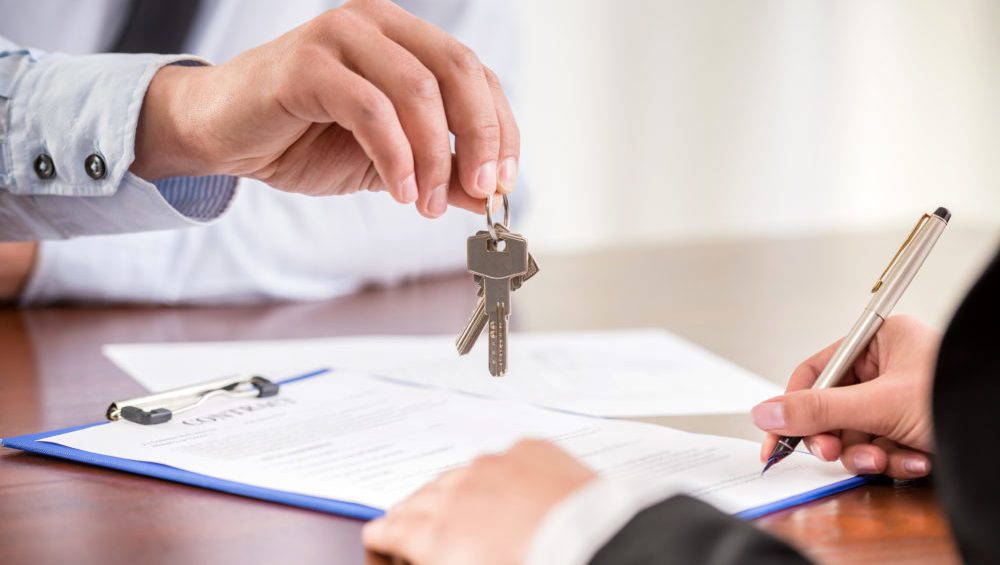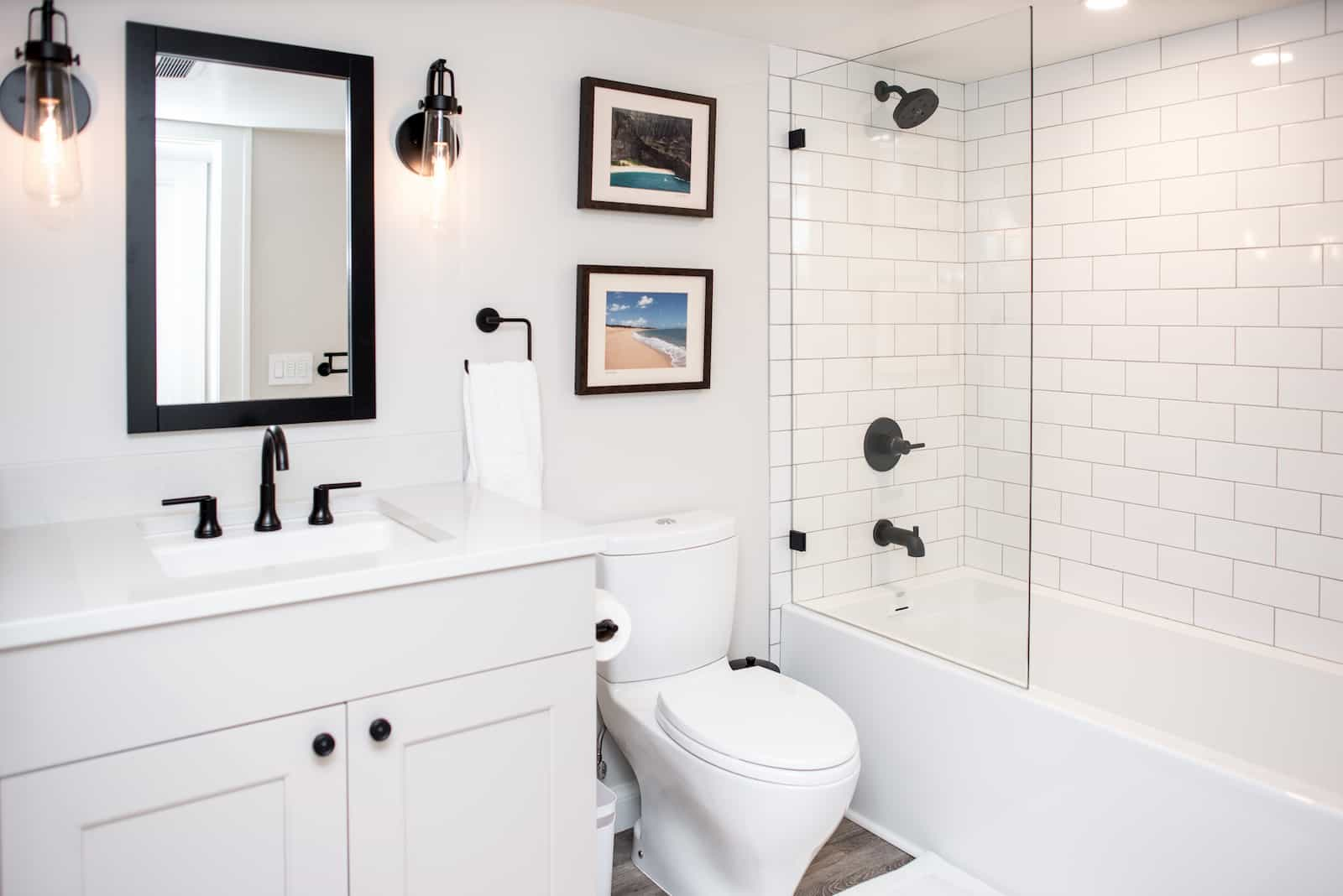
With most home washers and dryers stuck in a basement cellar or dingy garage, it can be hard to get laundry to feel like anything other than a boring chore. It feels counterproductive to handle laundry in a space that’s not pristine, and with no structure or space to a laundry room, those clean clothes too often become piles of unfolded laundry cluttering up other rooms in the house.
Luckily, there are a few easy ways to spruce up your laundry room to make it a better place to wash, dry, and fold clothes for your family. From creative storage to just the right lighting, here are five ways to make your laundry room work better for your family.
Close Off Your Laundry Room
First things first: make your laundry room into a distinct section of the house or room. If your washer and dryer are currently in a corner of a larger room, basement, or garage, create a distinct divider that makes the room its own space.
Your laundry room may be more of a laundry closet, but you can still use a trendy divider that will help keep the laundry out of sight when you have company over or just can’t think about folding socks right now. For minimum effort and cost, a curtain rod and curtains can provide that division in any design you desire.
Closing off your laundry room will not only separate your dirty laundry from the rest of your house, but also will provide a sound barrier so you won’t complain about the noise your washer and dryer make.
Other dividers, like barn doors or bamboo panels, are other great ideas based on the layout of your laundry room and the decor style of your house. You don’t have to break the bank to update your laundry room but it might be wise to factor in these costs as part of your financial goals for the year.
Install Good Lighting
Too many laundry rooms feel dim or dingy because the basement or garage lighting is subpar. Treat your laundry room lighting like any other room in the house, and invest in making it work for the space you have.

Strong overhead lighting might be the best choice for your laundry room, but consider softer, subtler recessed lighting or lighting dedicated to your work surfaces for the best experience. If your laundry room is large and may function as a utility room for other projects as well, be sure to take that into consideration too—you’ll want excellent lighting if you’re ever refinishing furniture or mending torn clothes.
Good lighting in your laundry room helps brighten the space and makes it feel like a place you want to spend time, rather than a place you are obligated to visit.
Choose the Right Sink
No laundry room is complete without a sink. Hand wash your delicates, rinse out stains, and use it as a general utility sink for messy household projects. The best laundry room sink for your family can be a great improvement and will depend on a variety of factors, including laundry room space and whether you intend to use it for more than just rinsing clothes.
Utility sinks are popular for many laundry rooms, as they have a large volume and deep basin. This makes it easy to thoroughly rinse out any article of clothing, even bulky things like jeans and sweaters. They’re also ideal for other household needs, like watering plants or even washing pets.
These sinks are often installed as standalone items, but you can incorporate them into the rest of your laundry room with creative coverings to make a flat surface for folding and hide storage underneath.
If you don’t have the space or budget for a massive utility sink, a smaller sink of any sort will still make it easier to do laundry. Make sure you install it near the washer for easy transfer of wet items, and try to preserve as much counter space as possible for folding.
Choosing a quality sink will not only allow for ease of use, but should also hold up over time. Buying a sink that can stand the test of time is hugely important when owning a home, especially as you get older and can’t do so many repairs on your own. Quality fixtures could help boost the value of your home, which is important if you choose to sell or apply for a reverse mortgage loan.
Get Creative with Your Storage
First things first in an ideal laundry room: clear the detergent bottles and dryer sheets off the top of the dryer. This feels like an inevitable layer of clutter in your laundry room, but without it, your laundry room will immediately feel a hundred times more pleasant.
There are dozens of ways you can set up your laundry room storage in a way that works for you. Cabinets over your workstation or shelves and drawers in between them are common and simple solutions for most houses. Simplifying your space with a minimal approach can have an impact on your mood and clean sheets never hurt a good night’s sleep.
If you have a closet-sized laundry room, a simple shelf above the washer and dryer can hold all the laundry room essentials. Or, some washer and dryer models come with an optional storage drawer underneath the machine, another great option for tiny spaces.
Regardless of the storage setup you have, don’t let empty bottles of detergent and fabric softener clutter up your space. Get rid of anything no longer being used, and keep smaller items like Tide pens or sewing kits in organizational bins on your shelves. When your laundry room feels neat and tidy, it won’t feel so tedious to do laundry.
Set Up a Folding Station
The hardest part of doing laundry is getting it from dryer to dresser, neatly folding it in between. We’ve all said we’ll fold it later, only to find a laundry basket full of clean clothes on the couch or dining room table three days later.
The solution? A folding station right in your laundry room. All you need is a flat surface, which can be in the form of a separate table or just a section of countertop along your washer and dryer.
Folding clothes within the laundry room keeps the chore of laundry contained to one space instead of taking over your house. You can also build your folding station to precisely the height you’d like to fold clothes, instead of uncomfortably half-sitting on your couch or bed.
To really level-up your laundry room game, install a curtain rod to hang-dry delicate items that can’t go in the dryer. It’s simple to install and creates a designated space to dry those articles of clothing, rather than hanging them in the bathroom or somewhere else inconvenient.
Your Laundry Room Can Be Better!
Don’t just take our word for it—start organizing your laundry room today and see how much better it feels to have a special space just for that dreaded chore. Keeping laundry in the laundry room makes it an easier chore to manage and you just might get it done faster. Create a space you like to be in and see how much better your laundry can be done.


 See Our National Coverage Map
See Our National Coverage Map




